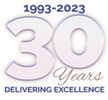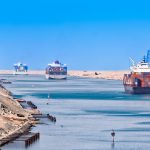
As the container shipping lines make their first attempt of 2024 at raising freight rates from Asia, with huge GRIs announced for mid-December and January, we review the ‘temporary’ surcharges they hope will recover revenues.
To support their rate recovery efforts the carriers are blanking around 40% of their advertised sailings from China and with the Chinese New Year holiday starting on the 10th February the lines will want to achieve a maximum percentage of their GRIs in the build-up to the factory shutdowns.
Whether or not carriers use surcharges to only pass on additional costs or restore their profit margins the fact remains that they are additional costs, that need to be justified to the shippers that have to bear them.
Particularly as there is a strong likelihood that we will see surcharges become a much larger component in the costing of sea freight services in 2024, with combined surcharges possibly accounting for 20% of the overall freight rate.
On the spot market, in particular, surcharges are added to the basic freight rate and the lines will do all they can to ensure that these surcharges are applied
EU Emissions Trading System
The EU-ETS emissions surcharge comes into operation on the 1st January.
The inclusion of shipping in the EU ETS aims to create financial incentives for reducing greenhouse gas emissions and promoting a transition to more sustainable practices.
The cost of compliance is expected to be significant and will keep increasing with the phased implementation, with the lines passing on the cost in the form of a standalone ‘Emissions Surcharge’ defined on trade basis.
Carriers have indicated that surcharge amounts will be reviewed on a monthly or quarterly basis as the volatile price of EUAs adds another layer of complexity to the surcharge, making it hard for the lines to predict how much they will cost.
There is still discussion on whether the surcharge should apply to the UK and Maersk have stated that only bookings where the Load Port and/or Discharge Port of the ocean journey is located in the EU/EEA scope will be charged the emissions surcharge.
However, for all bookings from China Maersk will add the EU ETS emissions surcharge to the base freight rate instead of an additional surcharge, because the Shanghai Shipping Exchange regulation views surcharges as temporary (for exports only).
So if regulations are that the EU ETS must be included in the freight rate from China, it is likely that other carriers will follow Maersk’s lead.
War Risk
Surcharges for war risks are applied when cargo transits close to conflict zones and are usually justified by the fact that the insurers themselves apply surcharges to the shipping companies.
This is not always the case and there is potentially an opportunity for the shipping lines to make some additional profit.
The spillover from the Israel/Gaza conflict continues with an NYK car carrier hijacked, a CMA CGM container ship seemingly attacked by a small drone in the Indian Ocean and Maersk replacing two vessels in the region, presumably due to ownership concerns, while Zim is re-routing some vessels.
There is currently a war risk premium for vessels going to Israel and if further incidents occur we may see the war risk premium expanded throughout the Red Sea and Gulf of Aden.
This is a fast moving, complex situation and we are monitoring it closely, so that we can implement contingency plans if necessary and keep you updated with the most important developments.
Fuel
There is currently a high risk of speculation on refined product prices and if there is a major escalation of the Israeli-Palestinian conflict, they are likely to become even higher.
This means that there is a risk that a general Emergency BAF surcharge could be introduced to take account of these potential cost increases.
Aden
With the USA seeking a coalition to protect shipping, this surcharge could be extended to cover the extra cost of securing merchant shipping convoys crossing the Gulf of Aden.
The increased risk involved in transiting the gulf could result in a significant increase in this surcharge, which was originally created to cover the cost of anti-piracy measures.
Suez Canal
The Suez Canal is increasing fees by 15% for Asia-Europe traffic from the 15th January 2024.
Again, if the Israeli-Palestinian conflict escalates, the carriers could be asked to contribute to the cost of securing the Suez Canal militarily, which would be in addition to war risk surcharges.
Panama
Transit and draught restrictions were imposed by the Panama Canal Authority (ACP) in response to persistent low water levels from the drought that has hampered operations since May.
Container shipping lines have reacted to the restrictions by adding canal transit surcharges ranging from $300 per teu to $500 and restrictions may stay in place for years.
While Surcharges like BAF and CAF have become a standard feature of freight rate calculations, there will always be scepticism of charges like the ‘container shifting’ charge announced by Maersk at various ports in North Europe and the Mediterranean, to cover re-stows on its ships.
We will, as always, pressure our carrier partners to fully justify the imposition or increase of any surcharge or ancillary charges.
EMAIL Andy Costara, if you would like to learn more, or have concerns about any of the issues raised here.





